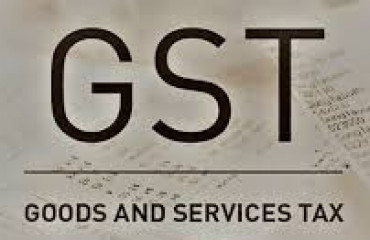
When Uttar Pradesh reported higher collection of goods and services tax (GST) than Tamil Nadu for April, some painted it as a turning point. The discourse revolved around two hypotheses. One was that Uttar Pradesh (a historical economic laggard) had found new engines to sail past Tamil Nadu (a historical economic leader). Two, fears were coming true that the tax in question, introduced seven years ago, would end up favouring large-consumer states, even if they were economically weak. Neither hypothesis has played out.
When Uttar Pradesh reported higher collection of goods and services tax (GST) than Tamil Nadu for April, some painted it as a turning point. The discourse revolved around two hypotheses. One was that Uttar Pradesh (a historical economic laggard) had found new engines to sail past Tamil Nadu (a historical economic leader). Two, fears were coming true that the tax in question, introduced seven years ago, would end up favouring large-consumer states, even if they were economically weak. Neither hypothesis has played out.
GST was introduced in July 2017 as a nationwide tax by subsuming a host of state taxes. For this April, UP reported GST collections of ₹12,290 crore, against ₹12,210 crore by Tamil Nadu. This needs to be read in context. Since the financial year closes in March, April tends to report higher collection than all other months, and is a one-off. For May, Tamil Nadu again topped UP. In the six full years of GST, the gap in collection between Tamil Nadu and UP has actually increased, from 13% in 2018-19 to 16% in 2023-24.
Between 2018-19 and 2023-24, India's GST collection grew at a compounded annual rate of 11.7%. There were 21 states and union territories with a population of 7 million or more that accounted for about 96% of GST mop-up in 2023-24. Of the six-most populous states, five trailed the national average—in descending order of population, Uttar Pradesh, Bihar, West Bengal, Madhya Pradesh and Rajasthan. Maharashtra was the exception, and unlike the other five, it's always been an economic leader.
Population advantage?
Besides Maharashtra, six other states bettered the national average for growth in GST collections. These are, in descending order of growth, Odisha, Kerala, Haryana, Karnataka, Jammu & Kashmir and Andhra Pradesh. Kerala and Jammu & Kashmir have a relatively small tax base. But three of these outperforming states recorded GST collections of above ₹1 trillion in 2023-24, namely Maharashtra, Karnataka and Haryana. Even in the older system, economically, these three states were among the better-performing ones.
In the older tax system that preceded GST, both the Centre and states levied taxes on goods. The Centre levied excise duty when goods left a factory. States levied sales tax when goods were sold to consumers, and those rates could vary from state to state. GST stitched these two ends for most goods, barring notable exclusions like alcohol and fuel.
Also Read: Seven years on, GST still sparks Centre-state friction
GST, at the typical rate of 18%, is levied at the point of sale. If a good is produced and sold in the same state, the entire 18% GST goes to the state. But if a good is produced in one state and sold in another, 9% of it goes to the state where the good is sold and the remaining 9% goes to the Centre, which then redistributes it to states based on a pre-set formula. This system is intended to balance consumption and production.
When the GST was launched, one hypothesis was that more-populous but less-developed states like UP, Bihar, Madhya Pradesh and Rajasthan would gain from GST. Conversely, more-industrialised states with relatively smaller populations like Gujarat, Maharashtra and Tamil Nadu would lose out on some tax collections. Such a shift has not happened.
Net Exporters and Importers
From a consumption point of view, a state's GST is influenced by two factors: its population and their purchasing power. A state with low population but high purchasing power can have a bigger economy than a more populous state. At the world level, for example, Japan is about one-tenth the population of India, but has a larger economy.
For Indian states in the GST context, population-adjusted numbers matter along with absolute numbers. For example, in 2023-24, Tamil Nadu's population was about one-third that of UP, but its GST collection was about 16% higher. On a per capita basis, Tamil Nadu's GST was about 3.7 times that of UP. Per capita GST of Delhi and Maharashtra were about 7.2 and 5.8 times that of UP.
Under GST, transporters need to carry e-way bills if the value of goods being transported by them exceeds ₹50,000. Each state reports data for three categories of e-way bills: for movement within the state, outgoing movement to another state, and incoming movement from another state. We considered e-way bills for inter-state movement of goods—the second and third category from the above classification—to see which states were 'net exporters' of goods and which ones were 'net importers'.
Of our set of 21 states that accounted for about 96% of GST collections, Gujarat was the highest net exporter of goods, followed by Maharashtra and mining-rich Odisha. At the other end, UP and Bihar were the highest 'net importers'.
Consumption is directly related to income levels. Populous states have to draft strategies and interventions to lift income levels of its residents. Unless that fundamental compact is altered, population will take a less-developed state only so far in GST collections.
